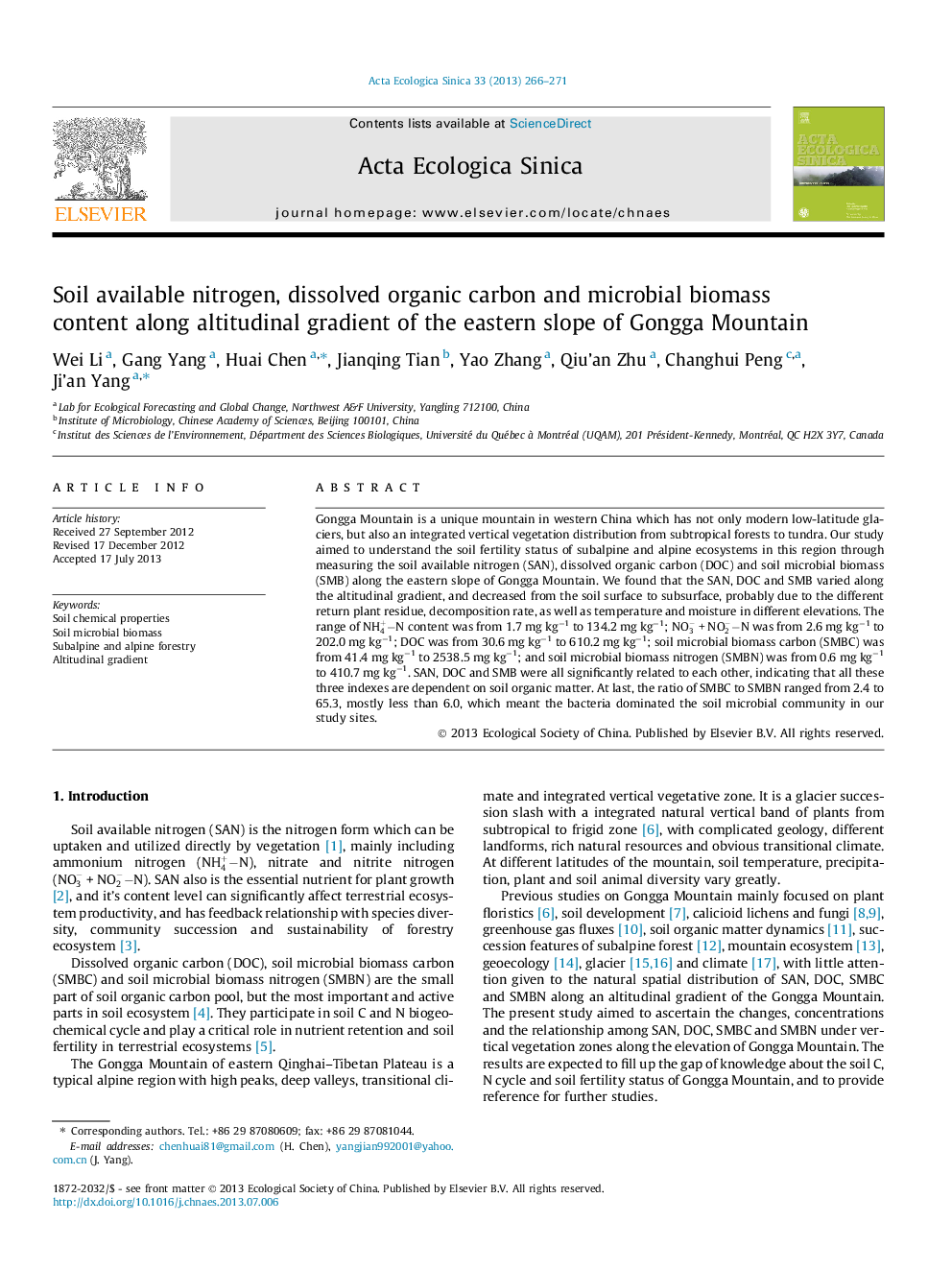| Article ID | Journal | Published Year | Pages | File Type |
|---|---|---|---|---|
| 4379801 | Acta Ecologica Sinica | 2013 | 6 Pages |
Abstract
Gongga Mountain is a unique mountain in western China which has not only modern low-latitude glaciers, but also an integrated vertical vegetation distribution from subtropical forests to tundra. Our study aimed to understand the soil fertility status of subalpine and alpine ecosystems in this region through measuring the soil available nitrogen (SAN), dissolved organic carbon (DOC) and soil microbial biomass (SMB) along the eastern slope of Gongga Mountain. We found that the SAN, DOC and SMB varied along the altitudinal gradient, and decreased from the soil surface to subsurface, probably due to the different return plant residue, decomposition rate, as well as temperature and moisture in different elevations. The range of NH4+âN content was from 1.7 mg kgâ1 to 134.2 mg kgâ1; NO3- + NO2-âN was from 2.6 mg kgâ1 to 202.0 mg kgâ1; DOC was from 30.6 mg kgâ1 to 610.2 mg kgâ1; soil microbial biomass carbon (SMBC) was from 41.4 mg kgâ1 to 2538.5 mg kgâ1; and soil microbial biomass nitrogen (SMBN) was from 0.6 mg kgâ1 to 410.7 mg kgâ1. SAN, DOC and SMB were all significantly related to each other, indicating that all these three indexes are dependent on soil organic matter. At last, the ratio of SMBC to SMBN ranged from 2.4 to 65.3, mostly less than 6.0, which meant the bacteria dominated the soil microbial community in our study sites.
Related Topics
Life Sciences
Agricultural and Biological Sciences
Ecology, Evolution, Behavior and Systematics
Authors
Wei Li, Gang Yang, Huai Chen, Jianqing Tian, Yao Zhang, Qiu'an Zhu, Changhui Peng, Ji'an Yang,
